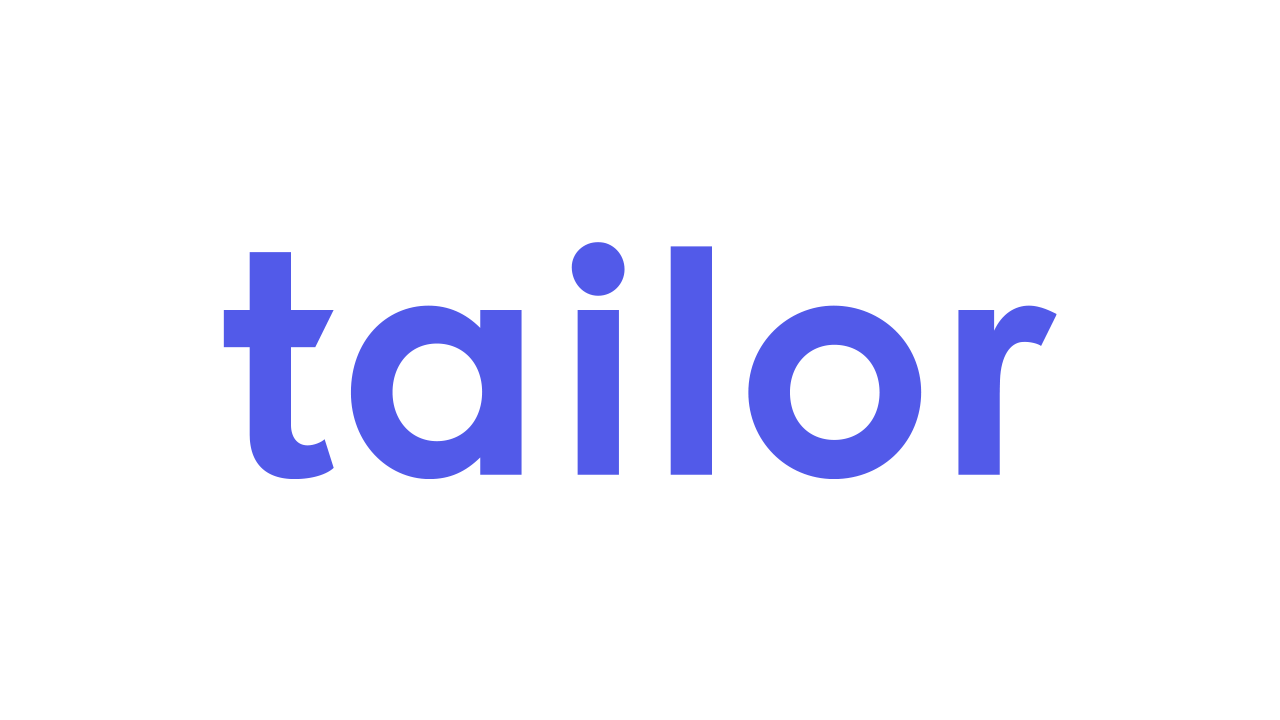Hello, I'm Nao, a developer at Tailor. Today, we're diving into GraphQL federation on our platform. If you're here, you're likely keen to understand what GraphQL federation is and why it matters.
With the rise of microservices in modern tech, we've seen many benefits but also some challenges, especially in data communication. That's where GraphQL comes in, making it easier for clients and backends to talk to each other.
In this blog, we'll break down the basics of GraphQL federatinessing GraphQL Federation for Modern System Integratioon, why it's important, and how it's different from other architectures. We'll also give a real-world example to show how it works in practice. Whether you're an experienced developer or new to the scene, this guide is designed to give you a clear picture of GraphQL federation on the Tailor Platform.
Let's dive in and explore GraphQL federation together.

Table of Contents
- Introduction: The Era of Distributed Systems and GraphQL
- What is GraphQL Federation?
- Contrasting Architectures: Traditional vs. Federated
- Real-world Usage of GraphQL Federation
- Powerful Federation in ERP World: Tailor Platform
- Why is Federation Vital for ERP/Business Apps?
- Understanding Apollo Federation: From Concept to Execution
- Best Practices, Challenges and Considerations in a Federated World
- Conclusions and Looking Ahead
1. Introduction: The Era of Distributed Systems and GraphQL
In today's tech landscape, the microservice architecture stands out, where developers segment functionalities into separate modules, resulting in multiple services. This modular approach offers scalability and flexibility, but it also introduces communication and data integration challenges.
Enter GraphQL. In a distributed environment characterized by microservices, GraphQL emerges as a game-changer. Unlike traditional REST APIs, which often require multiple requests to fetch or send data to different services, GraphQL allows clients to make a single query to retrieve precisely the data they need. This is especially beneficial in a microservices setup where data might be scattered across various services
One of GraphQL's standout contributions to the microservices setup is its ability to offer unified data access. Instead of juggling multiple endpoints corresponding to different services, clients have the luxury of querying a singular GraphQL endpoint. This not only simplifies data retrieval but also optimizes performance by reducing unnecessary data over-fetching or under-fetching.
Moreover, GraphQL's schema acts as a definitive contract between services. In a landscape dotted with multiple microservices, this schema offers a consistent blueprint, detailing the data types and permissible operations. This consistency is invaluable, ensuring clarity and uniformity across diverse services.
The advent of GraphQL Federation further elevates these benefits. By amalgamating multiple GraphQL services into one cohesive API endpoint, federation streamlines both client-side interactions and backend operations. Tools like Apollo Server and Apollo Gateway are instrumental in this integration, weaving together data from disparate GraphQL APIs into a unified tapestry.
In summary, GraphQL, with its unified approach and strong schema foundation, is reshaping how we navigate and manage data in a distributed world driven by microservices. As we journey further, we'll explore the intricacies and advantages of GraphQL Federation within this framework.
2. What is GraphQL Federation?
At its core, GraphQL Federation is a dynamic approach designed to combine multiple GraphQL APIs into a single unified API endpoint. In microservice architecture, developers integrate multiple services using GraphQL schema federation, each with its distinct schema. These individual schemas represent the structure and type of data that each service can provide. However, when you have multiple services, it can become challenging to manage and query these services efficiently.
Enter GraphQL Federation. This approach, primarily driven by the Apollo Federation specification, allows these distinct GraphQL schemas from different services to be combined into a federated graph. This federated graph then represents a unified schema, which is a cohesive representation of all the individual schemas combined. Within this federated architecture, smaller subgraph schemas contribute to a larger supergraph schema, ensuring that data from various services can be accessed seamlessly.
So, why is this important? For backend developers, this means they can define specific functionalities in their respective domains without overlapping. When a client query is made, instead of reaching out to multiple GraphQL APIs separately, the query is directed to one conceptual API. This streamlines the query planning process, ensuring that data is fetched optimally across multiple subgraphs.
Before the advent of federated GraphQL, there were other methods like schema stitching, which tried to combine multiple GraphQL schemas. However, federated schema design offers a dynamic API architecture, allowing optimal execution of GraphQL operations. Tools like Apollo Server and Apollo Gateway play a pivotal role in this, facilitating the merging of multiple GraphQL services into one cohesive API endpoint.
In traditional setups, developers might have used REST API with multiple REST endpoints or a single API for specific functionalities. But with the rise of GraphQL and the challenges of development velocity in managing multiple APIs, federation emerges as a game-changer. It addresses the challenges of having to make multiple requests to different services. With federation, a single query fetches all required data, simplifying both client-side operations and backend operations.
In essence, GraphQL Federation, with its federated architecture, offers a solution to the challenges posed by having multiple GraphQL services. It ensures that backend teams can work independently on their GraphQL service, and then their contributions are seamlessly integrated. This not only accelerates development by reducing redundancy but also ensures that the same functionality isn't duplicated across services. As we delve deeper into the world of GraphQL, tools and principles like these will be instrumental in shaping efficient and user-friendly APIs.

3. Contrasting Architectures: Traditional vs. Federated
In the ever-evolving world of technology, it's crucial to understand the differences between traditional and federated architectures. Let's delve into these contrasting approaches.
Traditional API Designs: REST API and Single API
Traditionally, developers often relied on REST API designs. In such setups, you might encounter multiple REST endpoints or even a single API catering to specific functionalities. While this approach has its merits, it can pose challenges, especially when data spans across multiple services. The need to make multiple requests to different services can slow down development velocity and complicate client-side operations.
Schema Stitching vs. Federation
Before the rise of Apollo Federation, there was schema stitching, an early method to combine multiple GraphQL schemas. However, federated GraphQL offers a more dynamic and efficient approach. With federation, each GraphQL operation is executed optimally across services, ensuring that data is fetched efficiently from multiple subgraphs.
API Gateway vs. Federated GraphQL
While API gateways act as a single entry point routing to multiple services, Federated GraphQL takes it a step further. It doesn't just route; it seamlessly integrates data from multiple GraphQL APIs under one API endpoint. This dynamic design ensures that client queries are streamlined, reducing the need for multiple requests to different services.
In summary, while traditional architectures like REST API have their place, the federated approach offered by GraphQL Federation, with its unified schema and dynamic API design, is reshaping how developers think about and design APIs in a microservice architecture.

4. Real-world Usage of GraphQL Federation
Case Study 1: E-commerce Platform Integration
An e-commerce platform, with multiple services like product listings, user profiles, and reviews, faced challenges in managing multiple GraphQL APIs. Each of these services had its distinct GraphQL schema, representing the specific data they provided. The challenge was the development velocity, as making multiple requests to these different services was slowing down both backend and frontend operations.
By adopting the Apollo Federation specification, the platform was able to combine these distinct GraphQL schemas into a federated graph. This resulted in a unified schema, which was an amalgamation of all the individual GraphQL schemas. Backend developers could now define functionalities in their respective domains without overlapping. On the client side, instead of making multiple requests to different GraphQL APIs, a single query directed to one conceptual API fetched all the required data. This streamlined the query planning process and optimized performance.
Case Study 2: Mobile App Backend Consolidation
A popular mobile app, with functionalities ranging from user interactions to content delivery, was built on multiple services. Each service had its GraphQL schema, and the challenge was ensuring consistent data representation and avoiding overlapping functionalities. The traditional REST API approach with multiple endpoints was proving inefficient.
By leveraging GraphQL Federation, the app's backend team could combine these multiple GraphQL schemas into a single unified API endpoint. This federated architecture, driven by the core principles of the Apollo Federation specification, allowed smaller subgraph schemas to contribute to a larger supergraph schema. The result was seamless data access across services. Apollo Server and Apollo Gateway played pivotal roles in this transformation, merging the multiple GraphQL services into one cohesive API endpoint.
The implementation details showcased that instead of juggling multiple APIs, a dynamic API design facilitated by GraphQL Federation ensured that a single query fetched the exact data needed. This not only simplified the client query operations but also reduced redundancy in the backend. The same functionality wasn't duplicated across services, and the gateway created a single endpoint by merging these services.
Case Study 3: Financial Services Platform
A financial services platform, dealing with user accounts, transactions, and investment portfolios, operated on multiple teams, each owning a GraphQL service. The challenge was the potential overlap in functionalities and the complexity of managing multiple GraphQL APIs.
By embracing GraphQL Federation, the platform could integrate these services under a unified GraphQL API. Backend developers defined distinct functionalities in their domains, and the federated architecture ensured that these were seamlessly integrated. The Apollo Server was instrumental in developing the GraphQL service, while the Apollo Gateway merged these services into a federated graph. The outcome was a streamlined client query operation, where a single query fetched all required data from one API endpoint.
In summary, these case studies underscore the transformative potential of GraphQL Federation in real-world scenarios. By offering a unified approach to managing multiple services and APIs, GraphQL Federation simplifies operations, optimizes performance, and ensures a more cohesive API design.
5. Powerful Federation in ERP World: Tailor Platform
In the realm of Enterprise Resource Planning (ERP), managing data and services efficiently is paramount. Tailor Platform (Tailor PF) steps in to provide a robust solution with its federation capabilities. Here's a more in-depth look into how Tailor PF is revolutionizing the ERP world:
-
Tailor PF's Federation Approach: At the heart of Tailor PF is its ability to provide federation in the ERP world. This means that instead of juggling multiple services, there's a unified approach to managing them.
-
Modules of Subgraphs: Tailor PF isn't just about federation; it's about doing it right. It offers modules of subgraphs that cater to various needs, such as dynamics database, directory service, state management, pipeline execution, and a rule-based engine, among others.
-
Dynamic Schema Updates: One of the standout features of Tailor PF is its adaptability. Any updates to the module schema or the addition of new modules are automatically reflected in the super graph. This dynamic nature ensures that the system remains up-to-date without manual interventions.
-
CLI Tool for Schema Management: Developers will appreciate the CLI tool provided by Tailor PF. It allows for easy updates to the subgraph schema. Coupled with the platform's auto-update feature, this tool accelerates development, ensuring that teams can focus on building features rather than managing schemas.
In essence, Tailor PF is not just another tool; it's a solution designed for the challenges of today's ERP world. By leveraging GraphQL federation and ensuring seamless integration of multiple services, it offers a streamlined approach to ERP management. Whether it's the dynamic API design, the unified API endpoint, or the efficient query planning, every feature of Tailor PF is geared towards optimizing performance and simplifying operations.

6. Why is Federation Vital for ERP/Business Apps?
ERP and business applications are the backbone of modern enterprises, driving their operations, decision-making, and growth. As these applications grow in complexity and scale, the need for efficient data management and service integration becomes paramount. Here's why federation is vital in this context:
-
Complexity of Business Applications: Modern business applications, especially ERPs, are not monolithic. They are a culmination of multiple services, each catering to specific functionalities. Managing these multiple services without a unified approach can lead to inefficiencies and data silos.
-
Unified Data Access: Federation, at its core, offers a singular access point for data scattered across multiple services. Instead of querying multiple GraphQL APIs or databases separately, a single query can fetch data from various sources. This not only simplifies client-side operations but also ensures consistent data retrieval.
-
Accelerated Development: With federation, backend teams can work independently on their respective domains. Once their contributions are ready, they can be seamlessly integrated into the main application. This modular approach accelerates development as teams can work in parallel without waiting for other modules to complete.
-
Reduced Redundancy: One of the challenges with having multiple services is the potential for overlapping functionalities. Federation ensures that similar functionalities aren't replicated across services. This not only conserves resources but also maintains a clean and efficient API design.
-
Optimized Query Planning: In a federated architecture, the system is designed to understand where each piece of data resides. When a client query spans multiple services, the system can fetch the required data optimally, reducing the overhead and improving performance.
-
Consistency and Clarity: Apollo Federation, among other tools, ensures that there's a consistent blueprint across services. This blueprint, or schema, details the data types, relationships, and permissible operations. Such clarity is invaluable in a business environment where consistency can directly impact operations and decision-making.
-
Scalability: As businesses grow, so do their data and service needs. Federation allows for easy scaling of services. New services can be added to the federated graph without disrupting existing operations, ensuring that the system remains agile and adaptable.
In conclusion, federation is not just a technical solution; it's a strategic approach to managing complex business applications in today's digital age. By offering a unified, efficient, and scalable method to handle data and services, federation is setting the gold standard for ERP and business application management.
7. Understanding Apollo Federation: From Concept to Execution
In this section, we'll delve deeper into the technical aspects of GraphQL federation, breaking down its components and understanding its inner workings.
What is Apollo in GraphQL Federation?
Apollo has been a significant player in the GraphQL ecosystem since its inception. Over the years, it has provided tools, libraries, and best practices that have shaped the way developers work with GraphQL. One of its standout contributions has been in the realm of GraphQL federation.
Originally, as GraphQL services and microservices architectures became more prevalent, there was a growing need to unify these services in a more streamlined manner. Apollo recognized this challenge and introduced the Apollo Federation specification. This specification was designed to allow multiple GraphQL services, each with its distinct schema, to be combined into a single federated graph. In essence, Apollo Federation provides a set of standards and guidelines that enable different GraphQL schemas from various services to be unified. This results in a more cohesive and streamlined API experience for both developers and end-users.
By championing this approach, Apollo has not only addressed the challenges posed by having multiple GraphQL services but has also set a standard for how these services can be seamlessly integrated. Through its tools and specifications, Apollo has made GraphQL federation a reality, allowing for more modular and scalable architectures.
Federation is Magical, but Not Magic
While GraphQL federation, especially with Apollo, offers a seamless way to combine multiple services, it's essential to remember that it doesn't automatically guarantee optimal performance. Regular monitoring and performance checks are crucial to ensure that the federated system runs efficiently.
-
GraphQL Server Considerations in a Federated Environment: Each GraphQL server in a federated setup has a specific role to play. It's essential to configure each server correctly to understand its position within the federated architecture. Proper configuration ensures that each server can respond accurately to queries, contributing its part to the unified API.
-
Schema Design Principles for Ensuring Optimal Performance: A well-designed schema is the backbone of any GraphQL service, more so in a federated environment. It's crucial to design the schema carefully to prevent conflicts and ensure efficient query execution. This involves defining clear relationships, keeping schemas up-to-date, and judiciously handling custom logic.

8. Best Practices, Challenges and Considerations in a Federated World
Trade-offs of Adopting a Federated Architecture
Like any architectural decision, transitioning to a federated model comes with its set of trade-offs. Federation undoubtedly offers a plethora of advantages, such as improved modularity, better service isolation, and the ability to develop and deploy services independently. However, it's imperative for developers and architects to be cognizant of the challenges that accompany this model:
-
Consistent API Design: One of the primary challenges in a federated setup is ensuring that the API design remains consistent across all services. This consistency is crucial for maintaining a seamless developer experience and ensuring that clients can predictably interact with the API.
-
Type Conflicts: In a federated environment, where multiple teams might be working on different services, there's a potential for type conflicts. For instance, two services might define a "User" type differently. It's essential to have mechanisms in place that can uniquely identify and resolve such conflicts.
-
Ensuring up to date schemas and consistent API design: Regular audits and reviews of the federated graph can ensure that schemas remain current and consistent across services.
-
Implementing custom logic and handling type conflicts: Review type, user type, and more: With multiple teams working on different services, it's possible to encounter type conflicts. Having a system to uniquely identify and handle such scenarios is essential.
Navigating the Federated Landscape with Tailor PF
While the challenges of a federated architecture might seem daunting, solutions like the Tailor PF can significantly simplify the journey. Here's how Tailor addresses some of the aforementioned challenges:
-
Consistent API Design: Tailor PF provides consistent schema management. This means that you don't have to worry about ensuring a uniform API design across all services. The platform takes care of it, offering a seamless developer experience.
-
Type Conflicts: The good news is that with Tailor's adoption of Federation V2, type conflicts become a thing of the past. No more sleepless nights over two services defining a "User" type differently. Tailor ensures that such conflicts are identified and resolved efficiently.
-
Up-to-date Schemas: One of the standout features of the Tailor federation platform is its ability to automatically gather subgraph schemas. This ensures that all components of your federated graph are always up-to-date.
-
Custom Logic Implementation: Tailor PF doesn't just stop at managing schemas and resolving conflicts. It goes a step further by providing a rule engine that allows developers to implement custom logic tailored to their specific needs.
In conclusion, while the federated model comes with its set of challenges, platforms like Tailor are here to ensure that developers can leverage the benefits of federation without getting bogged down by its complexities. If you use Tailor, many of the challenges mentioned above become non-issues, letting you focus on what truly matters - building great applications.
9. Conclusions and Looking Ahead
As we wrap up our exploration into GraphQL federation, it's evident that the landscape of API design and data management is undergoing a transformative shift. The rise of microservices has brought with it the challenges of managing multiple services, and GraphQL federation offers a compelling solution to these challenges.
The Tailor PF stands out as a beacon in this federated world. By providing a seamless integration of multiple services under a unified API, Tailor ensures that developers can focus on building features rather than juggling multiple APIs. The platform's commitment to consistent schema management, efficient conflict resolution, and dynamic updates makes it a go-to choice for developers looking to leverage the benefits of federation.
Looking ahead, the future of GraphQL federation seems promising. As more tools and platforms like Tailor emerge, developers will have even more resources at their disposal to navigate the federated landscape. The continued evolution of federation specifications, coupled with the growing adoption of GraphQL, indicates that federation will play a pivotal role in shaping the future of API design.
In conclusion, whether you're a seasoned developer or just starting your journey, GraphQL federation offers a world of possibilities. By understanding its principles, leveraging platforms like Tailor, and staying updated with best practices, you can harness the power of federation to build efficient, scalable, and user-friendly applications.
Thank you for joining us on this deep dive into GraphQL federation on the Tailor PF. We hope this guide has provided you with valuable insights and a clearer understanding of the federated world. As always, stay curious, keep exploring, and happy coding!










